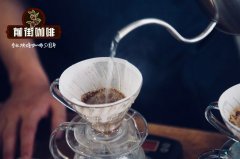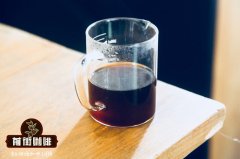Which Hawaiian coffee is good? why is Hawaiian coffee popular? How do you drink Hawaiian coffee?

Professional coffee knowledge exchange more coffee bean information please follow the coffee workshop (Wechat official account cafe_style)
It is said that the origin of coffee consumption originated from the Ethiopian shepherd Kaldi. One day he found that usually lazy sheep suddenly bleated excitedly at the goods they were transporting. After several experiments with neighboring monks, they accidentally found that the red magic fruit in the sack could make a god-given drink and boost their spirits. Since it was introduced into the Middle East, spices or nuts have been added to coffee since hundreds of years ago because of the Middle Eastern people's love of spices.
Coffee experts often compare the Kona coffee produced in Hawaii with the Blue Mountain coffee produced in Jamaica, both have mild and suitable acidity and the sweetness of delicate fruits, but the strict quality control of Kona coffee makes Kona coffee without bad evaluation to maintain a high level of quality, unlike the occasional poor evaluation murmur of Blue Mountain coffee.
There are two famous producing areas in Hawaii-- the KONA Kona producing area and the Kau card fog producing area.
KONA can be accepted
When it comes to Hawaiian coffee, most people think of KONA, but that coffee. In 1828, missionary Samuel Ruggles first planted coffee in the Kona area of the big island. To date, KONA Kona coffee production accounts for about half of Hawaii's total coffee production, with about 600 independent farms located in the north and south of Kona. But most of the coffee is grown on the west side of Manua Loa and on the slopes of the Hualailai volcano, mostly at low and middle elevations, about 3000-2000 feet. The volcanic area has always been famous for its black soil, which is moderately acidic and alkaline, is more rich in minerals, and helps to maintain soil water content. But the area is sunny early in the morning, and clouds begin to emerge at noon, which happens to keep coffee seedlings away from the hot afternoon sun, so it is said to be suitable for coffee pollination and flowering, contributing to the fruiting climate of coffee cherries.
Mark Twain, an American writer, mentioned in Letters from Hawaii in July 1866, "Kona coffee has a richer flavor than any other, be it grown where it may and call it by what name you please." Legend has it that coffee has become his favorite ever since. Coffee experts believe that Kona coffee is on a par with Jamaican Blue Mountain Coffee, with an elegant, mellow taste and slightly sour taste. With the adjustment of roasting degree, it can be a cup of pure tea or a cup of delicious fruit juice.
But what is special about that coffee is that every coffee bean is hand-picked to ensure that only the best quality beans can be used in coffee production. In fact, 100% pure Kona coffee is rare and sometimes hard to find. The rarest coffee beans are beads (round beans with a single pod), which account for only 4% and 5% of the total annual output of Kona coffee beans. What is special about beaded coffee beans is that each coffee fruit contains only one coffee bean, while other types of Kona coffee fruit contain two coffee beans.
KAU card fog
In recent years, Hawaiian Kau card fog coffee has been paid attention to in the United States. Planted at an altitude of about 3000-2000 feet above sea level on the east side of the Manua Loa hillside. Most of the award-winning estates are located in the northernmost town of Pahala in KA'U area of the big island. The topography of the KA'U area varies greatly, with coffee grown on sunny slopes, plenty of sun in the early morning combined with cloudy and foggy weather in the afternoon, and the mineral-rich black soil of the world's largest Manua Loa volcano is not only moderately acidic and alkaline, but its porous texture helps to maintain moderate water content. Create the best growing environment for coffee trees.
Originally, the Kawu area mainly planted sugarcane, but in 1894 it began to grow a small amount of coffee. Until the sugar price plummeted in 1996, the Kawu area actively transformed from sucrose to restart coffee cultivation. Thanks to the efforts of farmers, it caught up with excellent soil conditions and intensive farming techniques, and began to participate in regional and national cup testing competitions. From then on, it was repeatedly praised. In the cup test competition held in SCAA in 2011, Cafe Coffee not only won the first prize in Hawaii, but also won the honor of top coffee in the world. Cafu coffee is praised by experts as it has a rich, thick taste and unique aroma, such as walking in the garden, the entrance is as smooth as silk, and world-famous coffee brands have snapped up, making it a rising star of Hawaiian boutique coffee.
The Hawaiian coffee on Qianjie is from KONA, and I like the special flavor of KONA coffee very much.
The recommended brewing parameters of Qianjie coffee:
V60ap90 ℃ / 1 15 / time two minutes
Flavor: Mulberry, sucrose
Important Notice :
前街咖啡 FrontStreet Coffee has moved to new addredd:
FrontStreet Coffee Address: 315,Donghua East Road,GuangZhou
Tel:020 38364473
- Prev

How do you make Hawaiian coffee? what are the producing areas of Hawaiian coffee?
Professional coffee knowledge exchange more coffee bean information please follow the coffee workshop (Wechat official account cafe_style) about Kona, coffee drinkers have heard of his acidity and rich fruit acid characteristics, but in fact the term Kona can only represent the coffee beans produced in the state of Hawaii, their quality and taste vary greatly between different products, there is no way to accurately describe it, because
- Next

How do you drink Hawaiian coffee? What is the flavor of Hawaiian coffee? price of Hawaiian KONA coffee
Professional coffee knowledge exchange more coffee bean information please follow the coffee workshop (Wechat official account cafe_style) Hawaiian coffee, early due to the Japanese pursuit, due to the successful marketing of Kona producing areas on the island of Hawaii (commonly known as Big Island), most consumers mistook Kona for Hawaiian coffee. In fact, the so-called Kona coffee refers to 100% in K.
Related
- Detailed explanation of Jadeite planting Land in Panamanian Jadeite Manor introduction to the grading system of Jadeite competitive bidding, Red bid, Green bid and Rose Summer
- Story of Coffee planting in Brenka region of Costa Rica Stonehenge Manor anaerobic heavy honey treatment of flavor mouth
- What's on the barrel of Blue Mountain Coffee beans?
- Can American coffee also pull flowers? How to use hot American style to pull out a good-looking pattern?
- Can you make a cold extract with coffee beans? What is the right proportion for cold-extracted coffee formula?
- Indonesian PWN Gold Mandrine Coffee Origin Features Flavor How to Chong? Mandolin coffee is American.
- A brief introduction to the flavor characteristics of Brazilian yellow bourbon coffee beans
- What is the effect of different water quality on the flavor of cold-extracted coffee? What kind of water is best for brewing coffee?
- Why do you think of Rose Summer whenever you mention Panamanian coffee?
- Introduction to the characteristics of authentic blue mountain coffee bean producing areas? What is the CIB Coffee Authority in Jamaica?

